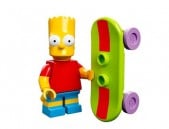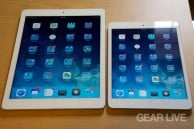Latest Gear Live Videos
Resolving HDTV Lag In Games
Posted by Christopher Sasaki Categories: Hardware, Nintendo Gamecube, PlayStation 2, PlayStation 3, Wii, Xbox, Xbox 360,
 The Xbox 360 has sought to usher in the era of high definition gaming, and many gamers have purchased HDTV sets to go along with their new Xbox 360s. However, while HDTV offers spectacular pictures at stunning resolutions, there are some issues, the most vexxing of which is HDTV lag. IGN.com tries to dissect the problem, and offer up some solutions to the issue. There are basically two areas where HDTV lag can occur: first, when resolutions other than the native resolution of the television are used, the TV will have to alter the signal to display correctly on the set. This will sometimes require scaling the image up or down in resolution, and may also require converting the signal from an interlaced signal to progressive, or vice-versa, depending on the television type. This conversion takes a finite amount of time, and depending on the television, will either be so quick as to be unnoticeable in gaming, or can be long enough to affect the ability to play games at all.
The Xbox 360 has sought to usher in the era of high definition gaming, and many gamers have purchased HDTV sets to go along with their new Xbox 360s. However, while HDTV offers spectacular pictures at stunning resolutions, there are some issues, the most vexxing of which is HDTV lag. IGN.com tries to dissect the problem, and offer up some solutions to the issue. There are basically two areas where HDTV lag can occur: first, when resolutions other than the native resolution of the television are used, the TV will have to alter the signal to display correctly on the set. This will sometimes require scaling the image up or down in resolution, and may also require converting the signal from an interlaced signal to progressive, or vice-versa, depending on the television type. This conversion takes a finite amount of time, and depending on the television, will either be so quick as to be unnoticeable in gaming, or can be long enough to affect the ability to play games at all.
The second issue occurs when there are additional filtering options offered by the TV. One of the more common is Samsung’s DNIe, but most of the high end HDTV manufacturers will have their own proprietary signal filter that will attempt to improve the picture seen by the user. This process again takes time. Usually it doesn’t take that long for signal processing to occur, but combined with the time taken to scale the image in the previous examples, this can again cripple gaming.
IGN proposes a few solutions to this problem. First, if the gamer hasn’t bought an HDTV set, try to test the set first with some timing intensive games in the store first. Obviously, it will be difficult to bring your dance pad in to work through some 10 foot Dance Dance Revolution tracks, but fighting games are notoriously twitch sensitive.
If you already have a set, try and set your HDTV to as close to native resolution as possible. With some consoles, this will be next to impossible. The Gamecube supports 480P resolution on some games, but most will be 480i. The Playstation 2 will have even fewer 480p games. Most original Xbox games are also 480p, but some will support 720p and higher resolutions. The Xbox 360 should offer native support for most resolutions, including 480p, 720p, and 1080i. Relying on the Xbox 360’s internal scaler should help resolve the issue in most circumstances.
They also recommend turning off any image enhancement filters on the TV. Some sets offer a “game” mode that passes the signal through without any additional filtering, and this may help as well. Finally, if none of these help, it may be necessary to purchase hardware that has a faster scaling engine than the one in the television set. IGN has a couple of recommendations, including the Micomsoft XRGB boxes that are usually available from import stores like Lik-Sang or NCSX.
Read More  | IGN Gear
| IGN Gear
Advertisement
The new HDMI 1.3 specification was recently announced, and the largest change, according to Extremetech, is a bandwidth increase from 165 MHz to over 225 MHz. The net effect of this change means that displays will be able to support 1080p displays at up to 90hz, or a 1080p 60hz display supporting 36-bit color or “deep color.” Leslie Chard, President of Licensing for HDMI, explains the limitations of 24-bit color: “that gets you 16 million colors, and the human eye can distinguish… That leads to scaling and onscreen effects which you can pick up. Either 36-bit or 48-bit RGB is beyond the ability of the human eye to distinguish.” The Blu-Ray and HD-DVD specifications technically allow for deep color support, but neither has officially announced availability. Gamers will note, however, that the PS3 will supposedly support the deep color specification, adding one more reason why the HDMI-capable PS3 should be favored. Of course, current digital televisions don’t support the deep color specification, as most are based around HDMI 1.1 or 1.2. The consumer electronics industry should be selling televisions with support for the new specification by this holiday season, adding one more expensive item the hard-core will need to experience the PS3 to the fullest.
Read More  | ExtremeTech
| ExtremeTech
Playstation 3 Retailers Planning For Shortage
Posted by Christopher Sasaki Categories: PlayStation 3, Rumors,
Retailers are preparing for a PS3 launch that could be far, far worse than the Xbox 360 shortages that plagued retailers during Holiday 2005, according to a report on GamesFirst. They source an internal Gamestop e-mail (the new parent company of both the Gamestop and EBGames chains) stating that stores that received “between 50 and 100 Xbox 360s at launch [expect] to get no more than 20 PS3s.” Gamestop still has not launched an official pre-order plan, and apparently entertainment store Hastings will not be taking pre-orders at all.
These numbers do seem to be at odds with Sony’s predicted launch numbers. Sony’s current plan involves having 2 million PS3’s available at launch in three territories, and an additional 2 million by the end of the year, with another 2 million shipping post Holiday 2006. If Sony holds to its numbers, that would be 4 million during Holiday 2006, in contrast with the 1.5 million Xbox 360’s shipped during the same period in 2005. The biggest variable here, however, is Japan. Sony should expect to sell an order of magnitude more consoles than Microsoft sold in Japan; Microsoft managed only 100,000 units in Japan in Holiday 2005. With Japan potentially taking upwards of 1.5 million units by itself, the US could be in a bad position. However, if traditional console distributions hold up, it will more than likely be the European territory getting the short end of the stick.
Another potential explanation may be Sony’s plan for the console; Sony’s corporate messaging has been that the PS3 is more than a mere console. Sony could be focusing on distributors like Best Buy, that can emphasize the “multimedia” nature of the machine.
Read More  | GamesFirst.com
| GamesFirst.com
Yahoo Takes On PS3 vs Xbox 360
Posted by Christopher Sasaki Categories: Hardware, PlayStation 3, Xbox 360,
 Yahoo Games has published a “state of the battle” between the Xbox 360 and the Playstation 3. Overall, the article is a decent summary of the strengths and weaknesses of the two platforms, covering: system hardware, exclusive games, high definition gaming, and movie formats.
Yahoo Games has published a “state of the battle” between the Xbox 360 and the Playstation 3. Overall, the article is a decent summary of the strengths and weaknesses of the two platforms, covering: system hardware, exclusive games, high definition gaming, and movie formats.
The hardware rundown is mostly accurate, but there are a couple of statements that stand out. Stating this: “Unlike the two Xbox 360 versions, it’s impossible to later upgrade the basic version of the PlayStation 3. If you want to snag the advanced features, you must pick up the more expensive system at the outset” is not exactly accurate. Of all the differences between the two SKUs, the only functionality that can’t be achieved by the lower cost unit is the HDMI port. This may come into play later, but all the other functionality can be had, according to Sony. The hard drive is a user upgradeable SKU, with off the shelf hardware. Those users wanting wireless networking will be able to get a USB wireless dongle, and similarly, memory stick functionality can be achieved through the USB ports as well.
Click to continue reading Yahoo Takes On PS3 vs Xbox 360
Sony’s Ken Kutaragi - PS3 Upgrades Possible
Posted by Michael Cardiff Categories: Corporate News, Mods/Hacks, PlayStation 3, Rumors,
 Spong.com is reporting on an interesting interview in the Japanese site PC Watch with PS3 boss Ken Kutaragi. The long and short of the article is that Sony really seems to still be running with their “The Playstation 3 is a computer” line. In the interview, Kutaragi suggested that - much like PCs - the Playstation may see regular upgrades in terms of hard-drive size, or even writeable Blu-Ray disc drives. One has to wonder on that second point - when are you going to want to transfer 40-50 GB off of your PS3 (other than, of course, to “legally” make “backups” of your games and Blu-Ray discs)?
Spong.com is reporting on an interesting interview in the Japanese site PC Watch with PS3 boss Ken Kutaragi. The long and short of the article is that Sony really seems to still be running with their “The Playstation 3 is a computer” line. In the interview, Kutaragi suggested that - much like PCs - the Playstation may see regular upgrades in terms of hard-drive size, or even writeable Blu-Ray disc drives. One has to wonder on that second point - when are you going to want to transfer 40-50 GB off of your PS3 (other than, of course, to “legally” make “backups” of your games and Blu-Ray discs)?
Kutaragi also goes on to say that “Speaking about the PS3, we never said we will release a game console…it is clearly a computer”. Granted, the whole distinction is a bit artificial at this point, but one has to wonder - if Sony’s intention was simply to release a high-powered Blu-Ray-capable computer, why didn’t it just release it under the VIAO line?
Read More  | Spong.com
| Spong.com
Square Enix Talks Final Fantasy XIII
Posted by Christopher Sasaki Categories: PlayStation 3, Role Playing Games,

1Up has a new interview with a few of Square’s creators of the games set against new Final Fantasy backdrop, Fabula Nova Crystalis. According to Yoshinori Kitase, game producer at Square Enix, the new games in the Nova Crystalis universe are “slightly different because there is no central title upon which everything is based, but there is a central theme: the tale of new crystals.” The three games currenly announced are Final Fantasy XIII, which is the most traditional style Final Fantasy game, the parallel Final Fantasy Versus XIII, and Agito, the mobile game. While each game inhabits the same universe, there will be no interaction between the games.
For the “main” game, Square’s character goals were a “female version of Cloud from FFVII.” The combat will be based around the same active-time battle system from previous games, but will be faster, so less time is spent waiting to input commands. The “Versus” game takes a different tack, where Square really hopes to try and experiment with Final Fantasy gameplay; it will definitely feature more action, and should not be “a simple combination of Advent Children and Kingdom Hearts 2,” though the game mechanics will be developed by the team responsible for Kingdom Hearts 2. The Square team also hints that they have something special in mind for the new PS3 motion-sensing controller.
Read More  | 1Up
| 1Up
PS3: Challenging, But Not “Broken”
Posted by Christopher Sasaki Categories: Hardware, PlayStation 3, Rumors,
Top game developers working on the PS3 have dismissed the recent claims from web news site, The Inquirer, as “entirely meaningless” and “misleading and uninformed” according to a report on GamesIndustry.biz. The claims of poor triangle performance by the Inquirer, while they may be technically true, are difficult to compare without knowing the types of tests that were run and the environment that they were run against. In the PC world, raw triangle count can only give the barest idea of performance, and according to the developers that GamesIndustry.biz talked to, “the PlayStation 2 had better tri performance than the Xbox, on paper” but “everyone knows that the Xbox was more powerful at running real games.”
Tackling the issue of the 16Mb/sec “local memory” figure, again, the developers claimed that the specification was true, but without the true context of what was being talked about. According to the report, every “developer concurred that the slide in question was referring to local memory on the RSX,” meaning that the memory access path from the Cell processor to the local RSX memory is slow. One developer stated, “it’s a total non-issue. You never, ever need to access that memory from the Cell…” Mostly, developers have found that the PS3 “was a challenge to work on… but every new platform takes a while to get used to…early PS2 games…were a real nightmare.”
Unfortunately, the developers quoted did not want to be named, for fear of NDA violations, but the quotes certainly seem to make more sense than the claims that The Inquirer was making. Certainly, there haven’t been developers lining up to bash the Playstation 3, most have been public about the performance of the hardware have been on the positive side of things; probably the most damning statement from any developer has been that the PS3 and the Xbox 360 were roughly the same in performance.
Read More  | GamesIndustry.biz
| GamesIndustry.biz
Motion Controller In Development For Over 2 Years - According To Sony
Posted by John Goulden Categories: E3, Editorial, Nintendo, PlayStation 3, Rumors, Wii,
 When Sony unveiled their motion controller at E3 the response of the audience was underwhelming to say the least. From all appearances, it seemed as though Sony was trying to capitalize on Nintendo’s Wii controller, and lessen the impact Nintendo’s new console was going to have on the PS3. A form of “me too” permeated their keynote and questions began to fly.
When Sony unveiled their motion controller at E3 the response of the audience was underwhelming to say the least. From all appearances, it seemed as though Sony was trying to capitalize on Nintendo’s Wii controller, and lessen the impact Nintendo’s new console was going to have on the PS3. A form of “me too” permeated their keynote and questions began to fly.
After a few weeks of the rumors floating around, Sony Computer Entertainment Worldwide president Phil Harrison was quoted as saying, “In a way I understand why people say [we stole Nintendo’s idea], but it is a little stupid, if you forgive the remark.” Phil elaborated by describing how Sony brought 3D graphics to the console market with the advent of the original PlayStation, yet did not cry “foul” when Nintendo released their 3D capable console, the N64. To help further squash the rumors, David Reeves, SCE Worldwide president and CEO, had the following to say: “We’ve had a positive reaction to the controller and obviously some people have asked if it’s a last minute thing. It’s not - it’s been planned for around two and a half years.”
It’s entirely feasible that Sony has worked on and developed the controller in absolute secrecy for over two years. However, it is difficult to imagine that there wasn’t a leak somewhere along the way giving even a hint of the controller’s motion capabilities. Even harder to believe is that Sony would remain totally silent on their “in development” motion controller, especially once Nintendo started to provide hints about the Wii’s controller.
To further cloud the issue, we spoke with a developer from Electronic Arts when we were at E3. It was the day of Sony’s announcement, and the question we asked was in regards to Madden 2007. We were curious to know how EA planned on implementing the PS3’s motion controller, as we had just seen Nintendo’s adaptation of Madden 2007 on the Wii. The developer looked at us for a moment, and then, in a wry tone of voice, said that they had only learned of the motion controller that very morning during Sony’s keynote, the same as everyone else. Secrecy is all well and good, but you would think the game developers would need a bit of beforehand knowledge so they could perform proper game development.
In the end, did Sony have their motion controller in development for over two years, long before Nintendo provided information as to the Wii’s abilities? It’s hard to say at this point, and we may never know, but it’s not inconceivable to think that Sony was scrambling for something that would help them “save face”.
Read More  | GameDaily BIZ
| GameDaily BIZ
Rumor: First PS3 Versions To Play PS2 Games Via Hardware
Posted by Christopher Sasaki Categories: Hardware, PlayStation 3, Rumors,
IGN posted a report based on information that has appeared in Japan’s Ultra One tech magazine, that suggests that for the initial run of PS3 consoles, backwards compatibility will be achieved through actual hardware on board, rather than software emulation. The Playstation 2, of course, achieved its extremely high level of backward compatibility with original Playstation titles through the benefits of including the full Playstation chipset onboard to handle some input functionality. The Playstation 2 could offer this feature at a relatively low cost for Sony because the original Playstation chipsets had been integrated and refined to the point where economics of scale and size took over. Including the Playstation 2 hardware is more problematic for Sony, as the more complicated PS2 hardware, including the Emotion Engine, still costs a fair bit to produce. It is suggested in the article that including the hardware is a stopgap measure until software emulation can be perfected.
Other speculation in the article revolves around the patching system that will be utilized for games, which is going to be another concern for console gamers that will only increase, given that a few high profile patches have already shipped for Xbox 360 games. Ultra One also believe there will be multiple SKUS of the Playstation 3, above and beyond what they see as the “basic system.”
Read More  | IGN.com
| IGN.com
West Virginia Schools Use DDR in Gym Class
Posted by Michael Cardiff Categories: Culture, PlayStation 3, Sports,
 Schools are finally figuring out that jumping around playing Dance Dance Revolution still counts as exercise, even though you’re staring at a TV. This latest use of DDR is being studied by exercise physiologists at WVU’s school of medicine, who note that early results of the program are “stunning”. 450 students at Suncrest Middle School in Morgantown, W.Va. are currently enrolled in the trial program, which is even receiving a lot of support from the school’s football coach. There are some interesting comparisons in this article, especially the fact that playing DDR for 45 minutes can burn as many calories as running 1-2 miles.
Schools are finally figuring out that jumping around playing Dance Dance Revolution still counts as exercise, even though you’re staring at a TV. This latest use of DDR is being studied by exercise physiologists at WVU’s school of medicine, who note that early results of the program are “stunning”. 450 students at Suncrest Middle School in Morgantown, W.Va. are currently enrolled in the trial program, which is even receiving a lot of support from the school’s football coach. There are some interesting comparisons in this article, especially the fact that playing DDR for 45 minutes can burn as many calories as running 1-2 miles.
Can we look forward to a day when Samba de Amigo (or Wii Sports or Donkey Konga) plus DDR constitutes a full-body aerobic workout?
Read More  | Pittsburgh Post-Gazette
| Pittsburgh Post-Gazette
Advertisement
© Gear Live Media, LLC. 2007 – User-posted content, unless source is quoted, is licensed under a Creative Commons Public Domain License. Gear Live graphics, logos, designs, page headers, button icons, videos, articles, blogs, forums, scripts and other service names are the trademarks of Gear Live Inc.










